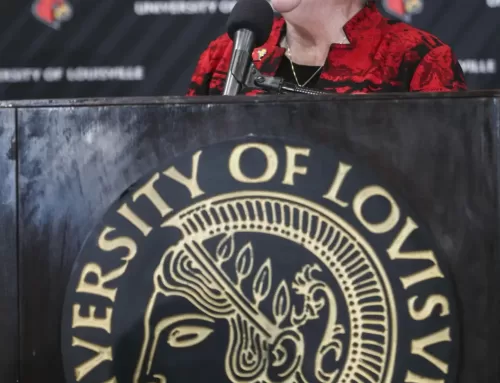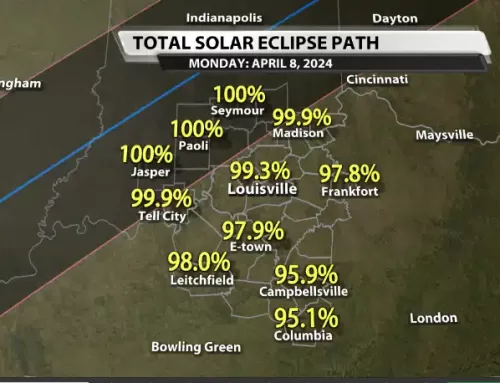By Simon Isham—
Almost half of undergraduates and a third of graduate students at U of L have taken out student loans to fund their educations, a report from the Office of Institutional Research and Planning finds. The Cardinal requested the report based on the most recent data available.
Of the 15,893 undergraduates who were enrolled at U of L in the fall of 2012, a total of 7,444 had accepted a federal or private student loan. This means that 47 percent of undergraduates at the university have taken out student loans.
These students accepted a total of $31.7 million in loans, with the average accepted amount at $4,156.57 for federal loans and $5,622.62 for private loans. Private loans made up only 7 percent of student loans for the fall 2012 enrollment group.
Of the 4,157 graduate students enrolled during the same semester, a total of 1,553 accepted student loans, meaning 37 percent of graduate students took on debt to finance their education.
U of L graduate students accepted a total of $13.7 million in loans, with the average loan amount of $8,843.83 for federal loans and $8,684.00 for private loans. Private loans made up only 4 percent of student loans during the fall.
Mike Abboud, associate director of financial aid, said that freshmen are eligible to receive up to $5,500 annually in loans, but graduate students are eligible to receive up to $20,500 annually. U of L’s yearly undergraduate tuition adds up to $9,750 for in-state students, whereas annual in-state graduate tuition is $10,788. Therefore, most graduate students do not need to accept 100 percent of their aid package in order to attend U of L, though many undergraduates do.
Between the fall 2012 and the spring 2013 semesters, enrollment statistics show an 8 percent decrease in enrollment, but a 13 percent increase in the total value of student loans accepted.
Assistant Director of Institutional Research Arnold Hook, who provided the data set, and Senior Research Analyst Linda Hou, who compiled it, said they were not sure why this might be, and that additional research would be required to determine the answer.
Abboud said that he would need to work closely and extensively with Hook and Hou for several weeks to be certain of an explanation, but his best guess was that student loan eligibility changed between the fall and the spring semesters, such that more students were eligible for more higher valued loans.
The data also showed a bigger gap between the average loan value accepted in federal and private loans for undergraduates than it did for graduate students.
Abboud said again that he would need to do a lot of research to be sure, but that “my gut tells me that if a student is a transfer student, especially from a community college, grant funding or KEES funding is enough to cover their cost. (At U of L), we offer them a loan package, but they don’t get that at a community college. So when a student transfers (to U of L), they have 100 percent of their loan eligibility in the spring term,” as opposed to having to divide their loans between the fall and the spring term. U of L receives more transfer students in the spring than in the fall.
The Kentucky Educational Excellence Scholarship (KEES) is money that all Kentucky students have the opportunity to earn while in high school by achieving GPA and standardized test score benchmarks. It becomes available upon a student’s enrollment in college.
The report from Institutional Research also contained data on student loans taken out over the summer.
U of L students accepted a total of 1,056 undergraduate and 398 graduate student loans during the summer 2013 semester. This means that just 18 percent of students who attended school in the summer of 2013 were on a loan.
The summer data included data for federal and private loans, as well as institutional loans, which are loans offered by the university.
“Many universities do not offer institutional loans, because they don’t want to be in the business of collecting on the loans for a five or 10 year period,” said Abboud. Instead, institutional loans are offered through specific departments when there is money left over in the departmental budget, and the students requesting them can demonstrate proof of hardship. Only two students took out institutional loans during that semester.
“Chances are the reason why it only occurred in summer is because the majority of (departmental) funds are tied up during the academic year, and the student needs to take summer courses to continue to move forward or regain eligibility in the future,” said Abboud.
U of L’s School of Business is one of the few academic units that offers institutional loans, but even there, these loans are rare.
According to Citydata.com, in 2011, the median household income for Louisville was $33,175. Institutional Research has calculated that 44 percent of students enrolled in fall 2012 were from Jefferson County, but that 76 percent of that group were residents of Kentucky.
Garrett Nugent, a freshman sports administration major, took out a federal subsidized loan for fall and spring, valued at $3,500, though he was eligible for $5,500. He did not accept an additional unsubsidized loan because he said it accumulated interest throughout college.
Though he earned $2,600 yearly in KEES money for his performance in high school, he did not receive a scholarship from the university. He was told that he was qualified for the scholarship for which he applied, but that the university did not have enough money to fund him, and had to make some cuts. He said he was invited to apply again for the next academic year.
“I did look at an outside loan, but we were denied,” he said. “I have no credit, and my dad had ‘too much credit out there.’ My dad has gotten loans for a car and a house in the past year, so I think if I had credit it would have been approved,” he said.
Nugent said he was considering taking out a different type of loan next year, but wasn’t sure where it would come from.
“I’m honestly just going to apply to a bunch of places and make my decision based on how much I need,” he said. “There are student loans out there that offer no payments until after you graduate, so that’s what I’m really going to try to get.”
Nugent said the prospect of interest didn’t bother him: “I’m not going to let it control my future or my education.” He is currently working as a desk assistant in the REACH center, but is not using his salary to pay down his student loans.
Alex Davis, a senior computer information systems major, took out federal subsidized and unsubsidized loans this year valued at a total of $10,000. He said that because the government was able to offer him the amount he needed to cover his education, he did not need to consider any alternative type of loan.
“Important factors for me were the grace period for paying off loans, and how I am going to pay it off. Long term interest concerns me, but I did earn KEES money while in high school. It was used for books and supplies, and it complimented my scholarship,” he said.
Davis said he is not currently working anywhere in order to pay off his loans, preferring to focus on his education.
Full disclosure: Davis is a former member of The Louisville Cardinal’s advertising staff.




